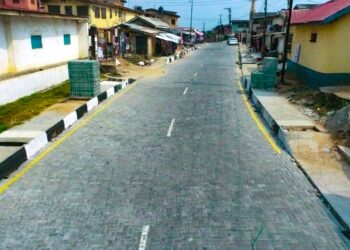Iraqi TV has announced the ‘fall of the mythical state’ after special forces recaptured the iconic Mosul mosque where ISIS chief Abu Bakr al-Baghdadi made his only known public appearance.
A top special forces commander said: ‘Counter-Terrorism Service forces control the Nuri mosque and Al-Hadba (minaret).’
But Staff Lieutenant General Abdulwahab al-Saadi said that while Iraqi forces were close to retaking the mosque, they were still some 20 metres away.
Iraqi state TV carried a banner on Thursday announcing the ‘fall of the mythical state’ – a play in Arabic on the ISIS title ‘state of the caliphate.’
Iraq’s PM is expected to deliver a victory speech in Mosul later today. The mosque and its famed Al-Hadba leaning minaret were Mosul landmarks and also held major significance in the history of ISIS rule in Iraq.
Baghdadi appeared during Friday prayers at Nuri mosque in 2014, soon after ISIS seized Iraq’s second city, calling on Muslims to obey him.
Three years later, Baghdadi’s fate and whereabouts remain unknown, and ISIS has lost much of the territory it overran in 2014.Russia’s Defence Ministry said the world’s most wanted terrorist was killed in a Russian air strike on May 28 along with other senior group commanders.
Baghdadi, who has a £20 million bounty on his head, had been believed to be hiding out in the desert outside the besieged city of Mosul in northern Iraq.
But intelligence agencies believe he escaped from the city while it was being retaken by the Iraqi army. It is thought he then tried to get to Raqqa.
His death has been reported more than a dozen times in the past. The jihadists blew up the mosque and minaret on June 21 as they put up increasingly desperate resistance to the advance of Iraqi forces.
Officials from Iraq and the US-led anti-IS coalition said the destruction of the site was a sign of the jihadist group’s imminent loss of Mosul, with Prime Minister Haider al-Abadi calling it an ‘official declaration of defeat’.
The loss of the iconic 12th century minaret – one of the country’s most recognisable monuments sometimes referred to as Iraq’s Tower of Pisa – left the country in shock.
But the destruction had been widely anticipated, with commanders saying ISIS would not have allowed Iraqi forces to score a hugely symbolic victory by recapturing the site.
ISIS claimed on its Amaq propaganda agency that the site was hit in a US air strike, but the US-led coalition said it was the jihadists who had ‘destroyed one of Mosul and Iraq’s great treasures’.
The mosque’s destruction came three days after government forces launched an assault on the Old City, the last district of Mosul still under ISIS control.
About 100,000 residents are believed to still be trapped in the district by ISIS, which has been using civilians as human shields to defend its last redoubt in Mosul.
The area still controlled by the jihadists is small but its narrow streets and the presence of so many civilians has made the operation perilous.
The jihadists have been offering fierce resistance in the Old City, with barrages of mortar fire and a huge number of booby traps slowing the Iraqi advance.
While Iraqi forces have made good progress to reach the Nuri mosque, Iraqi commanders have warned that the battle for the Old City is far from over.
ISIS has fallen, Iraqi TV claims
0
Leave a Reply Cancel reply
BROWSE BY CATEGORIES
- #SmartLagos
- Basketball
- Beauty
- Boxing
- Breaking
- Business
- Careers
- Crime
- Default
- Education
- Entertainment
- Event
- Fashion
- Featured
- Football
- Gaming
- Gist
- Golf
- Health
- Inspirational Patience
- Interview
- Investigative
- Law
- Lifestyle
- local
- MetroMan
- MetroPerson
- metroplus
- MetroProfile
- Movies
- Music
- MUSIC
- New Music
- News
- nolly wood
- Nollywood
- Novels
- Odawood
- Opinion
- Parenting
- Photos
- Politics
- Press Release
- Relationship
- Religion
- Scandal
- Security
- Sex
- Society
- Sports
- Technology
- Travel
- TV
- Videos
- Weird
- Wheels
- World
BROWSE BY TOPICS
#COVID19Nigeria
#EndSARS
Adams Oshiomhole
Akinwunmi Ambode
APC
ASUU
atiku
Atiku Abubakar
Big brother Naija 2020
boko haram
Buhari
Bukola Saraki
CBN
court
COVID-19
davido
ECOWAS
Edo Election
Edo State Election
efcc
Featured
FG
Goodluck Jonathan
gunmen
INEC
Kayode Fayemi
Lagos
Lagos State
Muhammadu Buhari
NCDC
NDLEA
news
Niger
Nigeria
NLC
Obaseki
PDP
police
politics
President Buhari
Sanwo Olu
senate
tinubu
wike
Yemi Osinbajo
© Copyright MetroNews NG 2020. All rights reserved.









